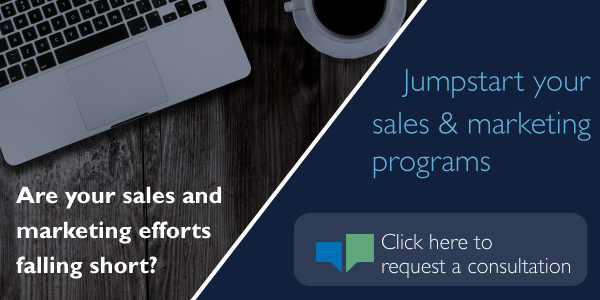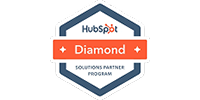4 Sales and Marketing KPIs That Drive the Growth Engine
Historically, sales and marketing departments have operated in separate silos of an organization, and often in a somewhat contentious manner. Phrases like “the leads are weak” and “sales can’t close” come to mind. In today’s high performing organizations, however, there is very little difference between sales and marketing. Both departments have the same goal, they just focus on different stages within the sales funnel - with marketing focusing more on top of the funnel growth, and sales focusing on bottom of the funnel activities like demoing and closing. Companies that have successfully aligned marketing and sales departments continually foster this process, allowing marketers to focus on driving qualified leads, so that sales assets can focus on closing deals. The faster you acknowledge and embrace this concept, the faster your revenue trajectory will rise.
Successfully aligned marketing and sales departments closely monitor a core set of key performance indicators (KPIs) which they use to drive the growth engine. These KPIs are as follows:
Cost Per Opportunity (CPO)
This is the central health metric of your demand generation program, and what should be your immediate focus when assessing your sales and marketing efforts. It’s important to note that an opportunity should be qualified against “BANT” criteria. BANT stands for:
- Budget: Does the prospect have the appropriate budget to consider your product or solution? Without budget there is no sale.
- Authority: Are you talking to the decision maker? If not, there is no sale and thus no opportunity.
- Need: Have you identified qualified prospects that need your solution? Remember, people only buy when they are in pain. No pain, no sale.
- Timeline: Does the prospect intend to buy within a reasonable amount of time? Usually this time frame is between 90-180 days, but for some longer sales cycles, up to 12 months is appropriate. Anything over a year is not a qualified opportunity.
Why is CPO important?
In underperforming sales and marketing organizations, even when opportunities are generated, they are normally done so at a cost that is not accretive to growth, and it is because they are not tracking CPO religiously. Conversely, high performing orgs tracking sales and marketing KPIs generally know their CPO well, and work to drive CPO lower and increase their margins.
Determining Your CPO
To generate your CPO, simply add all of the costs (directly attributable advertising, labor, expenses, etc.) associated with your customer acquisition effort over a given period of time and divide by the total number of BANT qualified opportunities during that same time period. That CPO equation would look something like this:
|
Advertising Cost |
$1200 |
|
Marketing Technology Cost |
$3600 |
|
Marketing Labor Cost |
$8750 |
|
Sales Labor Cost |
$8205 |
|
Total Costs |
$21,775 |
|
Total Number of Qualified Opportunities |
652 |
Total Costs / Total Number of Qualified Opportunities = $33.40 Cost per Opportunity (CPO)
By applying a logical assumptive close rate of 20% against your CPO, you should achieve a customer acquisition cost (CAC) that generates an acceptable return on deployed capital over the lifetime value (LTV) of the customer account.
Cost Per Lead (CPL)
Every sales and marketing operation needs to be tracking their cost per lead (CPL) to ensure that the assets that they have deployed are generating leads cost effectively. It is important to understand; however, that leads are not opportunities. Whether they are marketing qualified leads (MQLs) or sales qualified leads (SQLs) is somewhat immaterial. If the prospect is not qualified against BANT, then they are not an opportunity.
Why Measure CPL?
Companies need to be measuring CPL in a channel attribution model. What is your CPL via email marketing vs. social media marketing? What about the CPL for conferences, tradeshows, and other event marketing? You need to understand these numbers to ensure your marketing dollars are being optimally spent. Without insight into what you’re “paying for your leads,” chances are you are not generating leads at a cost efficient rate. This will ultimately impact your margins and hinder scalability.
Determining Your CPL
Cost per lead is one of the easier KPI calculations; however, it is important that you measure it both holistically and by channel. To determine your CPL, simply add up all costs directly related to lead generations, such as advertising spend, content marketing costs, and distribution costs, and then divide by the number of leads.
Customer Acquisition Cost (CAC)
How much does it cost you to acquire a customer? If you don’t know this number off the top of your head then you are likely not operating within a high performing sales and marketing team. Cost per acquisition, or customer acquisition cost (CAC), is an essential financial metric every successful business leader follows.
Why is CAC So Important?
If your business relies on profit, then it is imperative that you know how much it costs you to acquire a customer. In order to avoid margin compression, tracking your CAC to a certain number will help ensure you’re winning customers at an appropriate cost. If you’re not monitoring CAC, then you may be spending too much to acquire a new customer and may even be losing money on a customer.
Determining Your CAC
To determine your CAC, quantify your total spend on sales and marketing efforts by factoring in salaries, software, advertising spend, etc. Then divide by the number of deals you closed in that same timeframe. Here’s an example:
- All-in Sales & Marketing Cost: $21,775
- Number of Deals Closed: 77
- Cost Per Customer Acquired: $282.79
Pro tip: Try looking at CAC over longer periods of time, such as a quarterly or semi-annual basis.
Return on Deployed Capital (RDC)
The return on deployed capital metric measures one thing: how effective is the sales and marketing program holistically? Are you delivering a return on the company’s capital investment for salaries, travel, entertainment, advertising, and more? Industry benchmarks of 3X (300%) return on deployed capital should be your minimum acceptable threshold for performance year over year.
Why Measure RDC?
As with any capital investment, you want to make sure you are getting more in return than what you put in. Unfortunately, this isn’t always the case in underperforming sales and marketing teams. In fact, many sales organizations are deploying capital inefficiently, not tracking sales KPIs and struggling to hit sales goals. They can’t pinpoint their RDC, so they often hire more underperforming reps which just compounds the issue. Understanding your RDC will help you make smarter capital investments.
Determining Your RDC
To find your return on deployed capital, simply add up all costs associated to your sales and marketing programs, including salaries, technology costs, advertising, etc. - we’ll call this “S&M Deployed Capital” Then you divide your Net Sales or Revenue by the S&M Deployed Capital.
RDC = Net Sales / S&M Deployed Capital
As Peter Drucker famously said, “What gets measured gets improved.” Keep a tight handle on these four fundamental sales and marketing KPIs and good things will happen for your business. Tracking key performance indicators can seem daunting, but with the right tools, you can easily monitor each in real-time. We recommend using a tool like Databox to automate reporting of these KPIs.
For more information on how to implement and execute against these KPIs, request a consultation from a FullFunnel Senior Partner.











